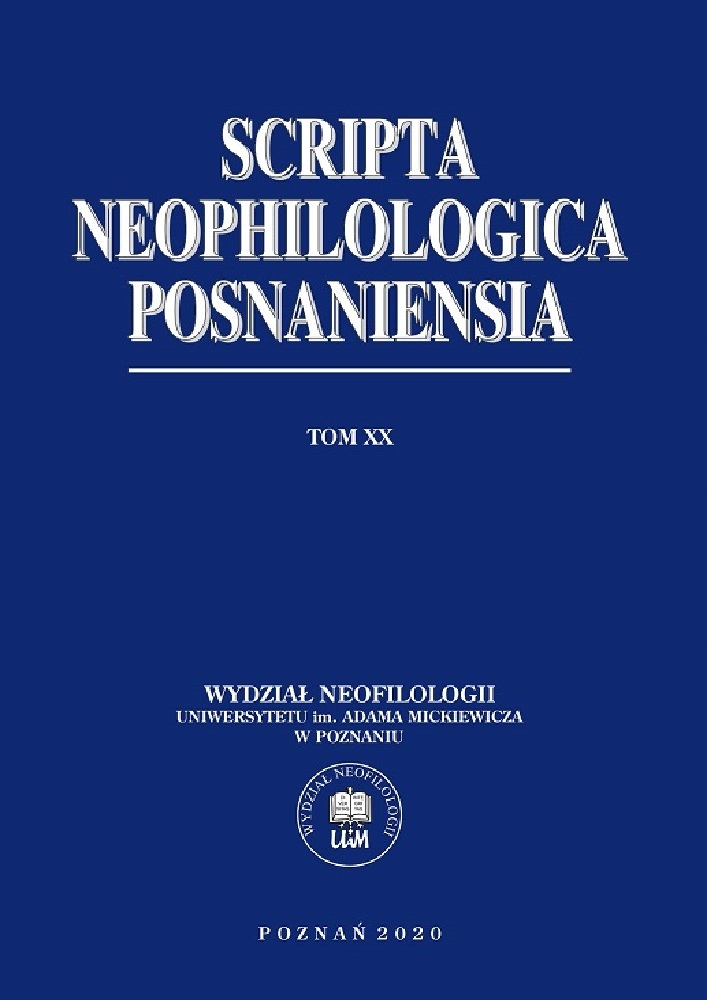Abstrakt
Runic and ogham scrips are an important part of the heritage of the British Isles. While it is difficult to determine exactly where and when they were invented, and the contemporary consensus on this issue leaves many questions open, the importance of these writing systems in the oral-literate transition cannot be called into question. For these reasons, the following study has two aims. Firstly, it attempts to familiarise the reader with the historical background to the process of transition from orality to literacy. Secondly, it tries to allocate runes, ogham and Latin scripts within an anthropological perspective.
Bibliografia
Arnold, C.J. 1997. An archaeology of the early Anglo-Saxon kingdoms. London/New York: Routledge. Berresford-Ellis, P. 1992. Celtic inheritance. London: Constable.
Borawska, T. and K. Górski. 1993. Umysłowość średniowiecza. Warszawa: Instytut Wydawniczy Pax.
Briggs, C.F. 2010. “Literacy, reading and writing in the medieval west”. In: Roberts, J. and P. Robinson. (ed.). The history of the book in the West: 400AD–1455, Volume 1. Farnham: Ashgate Publishing Limited. 481–504.
Brown, M.P. 2003. The Lindisfarne gospels. Society, spirituality and the scribe. London: The British Library.
Brown, M.P. 2006. How Christianity came to Britain and Ireland. Oxford: Lion Hudson.
Davies, R.R. 1987. Conquest, coexistence and change: Wales 1063–1415,Vol. 2. Oxford: Clarendon Press.
Davies, J. 1999. The Welsh language. A pocket guide. Cardiff: University of Wales Press.
Davies, S. 2007. (ed.). The Marbinogion. Oxford: Oxford University Press.
De Baye, J. 1893. The industrial arts of the Anglo-Saxons.London: Swan Sonnenschein and co.
De Jong, M. 2011. “Religia”. In: McKitterick, R. (ed.). Wczesne średniowiecze. Warszawa: Świat Książki. 155–193.
Elliott, R.W.V. 1957. “Runes, yews and magic”. Speculum 32.2. 250–261.
Filppula, M., Klemola, J. and H. Pitkänen. 2002. The Celtic roots of English. Joensuu: University of Joensuu, Faculty of Humanities.
Harris, W.V. 1989. Ancient literacy. Cambridge, Mass.: Harvard University Press.
Henderson, G. 2000. Wczesne średniowiecze. Warszawa: Wydawnictwo Naukowe PWN.
Hines, J. 1992a. “The Scandinavian character of Anglian England: an update”. In: Martin O. and H. Carver. (eds.). The age of Sutton Hoo. Woodbridge: Boydell Press. 315–329.
Hines, J. 1992b. “The seriation and chronology of Anglian English women’ graves: a critical assessment”. In: Jørgensen, L. (ed.). Chronological studies of Anglo-Saxon England, Lombard, Italy and Vendel-period Sweden. Copenhagen: University of Copenhagen, Institute of Prehistoric and Classical Archaeology. 81–93.
Jackson, K.H. 1953. Language and history in early Britain. A chronological survey of the Brittonic languages, first to twelfth century A.D.. Edinburgh: Edinburgh University Press.
Jesch, J. 1998. “Still standing in Ågersta: textuality and literacy in late Viking-age rune stone inscriptions”. In: Düwel, K. and S. Nowak. (eds.). Runeninschriftenals Quelleninter disdizplinärer Forschung. Proceedings of the fourth international symposium on runes and runic inscriptions in
Göttingen, 4–9 August 1995. Berlin/New York: Walter de Gruyter. 462–475.
Lord, P. 2003. Medieval Wales (the visual culture of Wales). Cardiff: University of Wales Press.
Magoun, F.P. 1953. “Oral-formulaic character of Anglo-Saxon narrative poetry”. Speculum 28.3. 446–467.
Malone, K. (ed.). 1962. Widsith. A study in Old English heroic legend. Copenhagen: Rosenkilde and Bagger.
Manning, W. 2001. Roman Wales. A pocket guide. Cardiff: University of Wales Press.
Ong, W. 2002. Orality and literacy: the technologizing of the word. London/New York: Routledge.
Opland, J. 1980. “From horseback to monastic cell: the impact on English literature of the introduction of writing”. In: Niles, J.D. (ed.). Old English literature in context. Cambridge: D. S. Brewer. 30–43.
Powell, T. and G. Eyre. 1980. The Celts. London: Thames and Hudson.
Redknap, M. 1991. The Christian Celts. Treasures of late Celtic Wales. Cardiff: National Museum of Wales.
Robinson, F.C. 2008. “The Anglo-Saxon poetic tradition”. In: Momma, H. and M. Matto. (eds.). A companion to the history of the English language. Malden, Mass./Oxford: Wiley-Blackwell. 435–444.
Salisbury, J.E. 2009. “Europe”. In: Salisbury, J.E. and J.L. Fitzsimmons. (eds.). The Greenwood encyclopaedia of global medieval life and culture. Volume I: Europe and the Americas. Westport, CT/London: Greenwood Press. 1–178.
Schaeffer, J.D. 1996. “The dialectic of orality and literacy: the case of Book 4 of Augustine’s De doctrina Christina”. Publications of the Modern Language Association of America (PMLA) 111.5. 1133–1145.
Sims-Williams, P. 2006. “The uses of writing in early medieval Wales”. In: Pryce, H. (ed.). Literacy in medieval Celtic societies.Cambridge: Cambridge University Press. 15–38.
Singh, I. 2005. The history of English. A student’s guide. London: Hodder Education.
Stanley, E.G. 2000. Imaging the Anglo-Saxon past. The search for Anglo-Saxon paganism and Anglo-Saxon trial by jury. Cambridge: D. S. Brewer.
Williams, E. 2004. “Literacy studies”. In: Davies, A. and C. Elder (eds.). The handbook of applied linguistics. Malden,Mass./Oxford: Blackwell Publishing. 576–603.
Wood, I. 2011. “Kultura”. In: McKitterick, R. (ed.). Wczesne średniowiecze. Warszawa: Świat Książki. 194–231.
